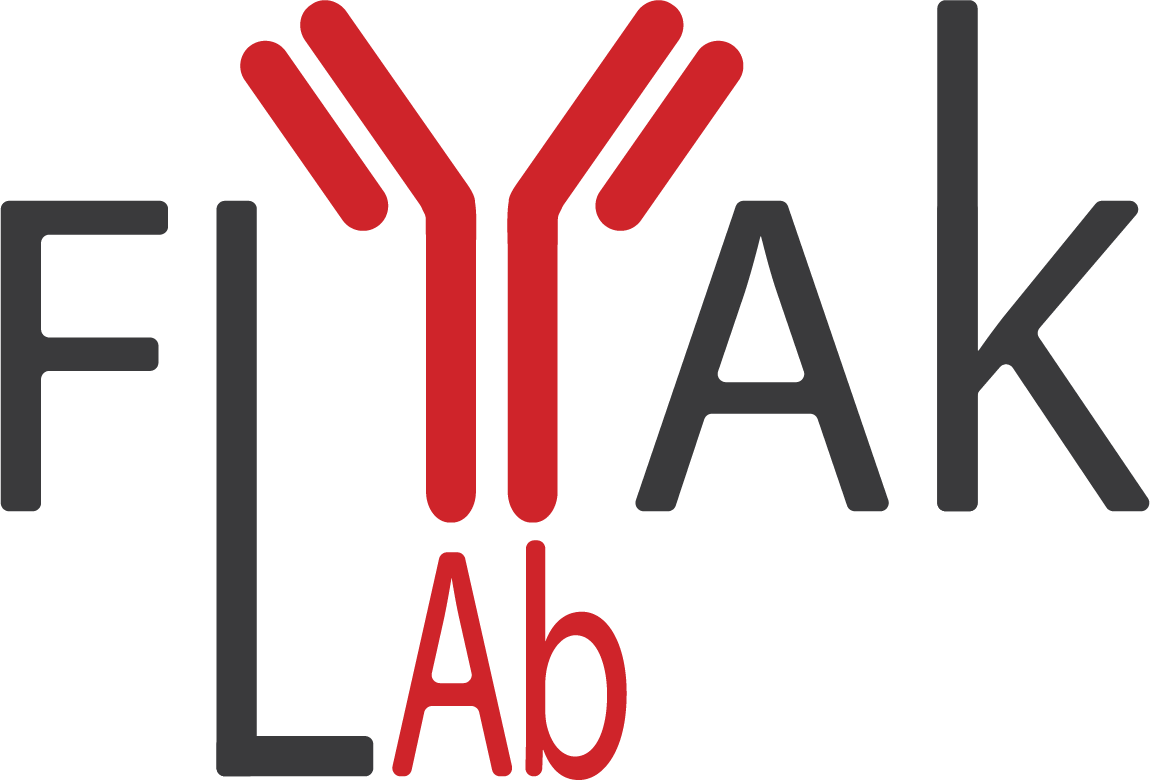Our Research
In the Flyak lab, you can find us solving scientific mysteries by mining for antibodies, protein crystals, and structures. We consider ourselves to be modern prospectors who are using modern tools to discover “gold nuggets” – neutralizing antibodies. By using crystals and the power of X-ray beams, we obtain detailed structural information about antibodies and their targets. We believe that our curiosity and persistence in this joyful endeavor will lead to the ultimate alchemist dream – vaccines that can elicit protective antibodies against diverse viral infections.
Interested to learn more?
-
Our adaptive immune system has the capacity to mount an effective offense against viral pathogens and provide a long-term protection against reinfection. This property of the immune system is mediated, in part, by diverse repertoire of antibody molecules that neutralize viruses by preventing the virus entry into the host cell. The effectiveness of vaccines usually relies on the production of high titers of such neutralizing antibodies. For viruses with extraordinary genetic diversity, such as Hepatitis C virus (HCV) or HIV-1, an effective vaccine has to stimulate the development of broadly neutralizing antibodies (bNAbs) that block infection from diverse viral isolates.
With a primary focus on developing HCV vaccine, we study bNAbs isolated from HCV-infected individuals who were able to clear their viral infection. Using structural biology techniques, such as X-ray crystallography and Electron Microscopy, we investigate how effective bNAbs from these individuals mediate the clearance of extraordinary diverse viral isolates. We then design immunogens that stimulate the development of similar bNAbs and test these vaccine candidates in different animal models. We hope that our research will lead to the development of a prophylactic HCV vaccine and change the way we approach the development of vaccinees for other rapidly-mutating viruses.
-
Most antibody discovery platforms are based on sorting of antigen-specific B cells using soluble viral glycoproteins. While such methods provide excellent efficiency in isolating antibodies to epitopes present on the protein used in selection method, they lose their appeal when one is interested in studying antibodies that recognize conformationally sensitive epitopes. For example, bNAbs isolated from patients who clear HCV infection predominantly target two conserved antigenic regions: one region is present on the surface of E2 glycoprotein, and one antigenic region includes epitopes that span the E1E2 heterodimer. While we and others characterized dozens of E2-specific bNAbs, little is known about bNAbs that recognize neutralizing epitopes spanning E1E2 heterodimer.
To enable the holistic study of human antibody response against HCV, we use the hybridoma generation technique, which is based on the ability to identify B cells that express antibodies that bind or neutralize the virus. Using this strategy, we can isolate not only E2-specific bNAbs but also HCV bNAbs that recognize E1E2 conformational epitopes (Colbert et al., 2019). We believe that the structural and functional characterization of E1E2-specific bNAbs will inform the design of novel E1E2 immunogens.
-
Typically, during HCV vaccine experiments, only polyclonal antibody responses (serum samples) are studied. As a result, we lack information about the specificity of elicited monoclonal antibodies or the structural features associated with animal-derived HCV bNAbs. We also know very little about the structural features of effective antibodies that some HCV-infected individuals develop during the early stages of HCV infection. The structures of antibodies bound to HCV envelope glycoproteins can provide key information about the conformation and flexibility of neutralizing epitopes that will inform rational immunogen design.
We are growing crystals of HCV glycoprotein in complex with potent bNAbs and then use X-ray crystallography tools to visualize how neutralizing antibodies bind and neutralize HCV (Flyak et al., 2018; Flyak et al., 2020). For structural studies, we use bNAbs isolated from individuals who cleared HCV infection or vaccine-induced bNAbs from animals. Detailed comparison of structural features associated with potent human and animal-derived bNAbs will enable us to optimize HCV immunogens to fine-tune their desired specificity and selectivity.
-
HIV-infected patients never clear their infection and a small subset of individuals develops bNAbs after years of chronic infection, suggesting the need for complex vaccine strategies to elicit such antibodies. In contrast, 30% of HCV-infected subjects develop bNAbs after just a few months of infection, and we have shown that these antibodies are responsible for the clearance of HCV infection (Kinchen et al., 2018). We believe that effective HCV vaccine needs to stimulate the development of such bNAbs.
We are using different animal model systems (mice and non-human primates) and methods of immunogen delivery (protein immunogens and E2 proteins conjugated to nanoparticles) to evaluate the development of HCV bNAbs. By investigating immunization strategies that lead to the development of neutralization breadth, we aim to develop effective vaccines against rapidly mutating viruses.
-
Persistent infection with HCV leads to primary hepatocellular carcinoma, a type of liver cancer. One of the main goals of our research is to develop an effective HCV vaccine. While an effective HCV vaccine would decrease the incidence of HCV infections, it will not be effective in the large number of individuals who have already developed liver cancer due to chronic HCV infection. Knowledge about tumor-specific immune responses could lead to the development of cancer immunotherapies effective against liver cancer. However, while T cells are widely studied and characterized in the context of tumor immunity, very little is known about what role B cells play in the tumor microenvironment.
One of our long-term research goals is to interrogate the role of B cells and antibodies in tumor immunity. By studying B cell responses and tumor-specific antibodies in patients with cancer, we are exploring antibody-based immunotherapies as well as vaccines that could train the immune system to recognize and destroy cancer cells.

